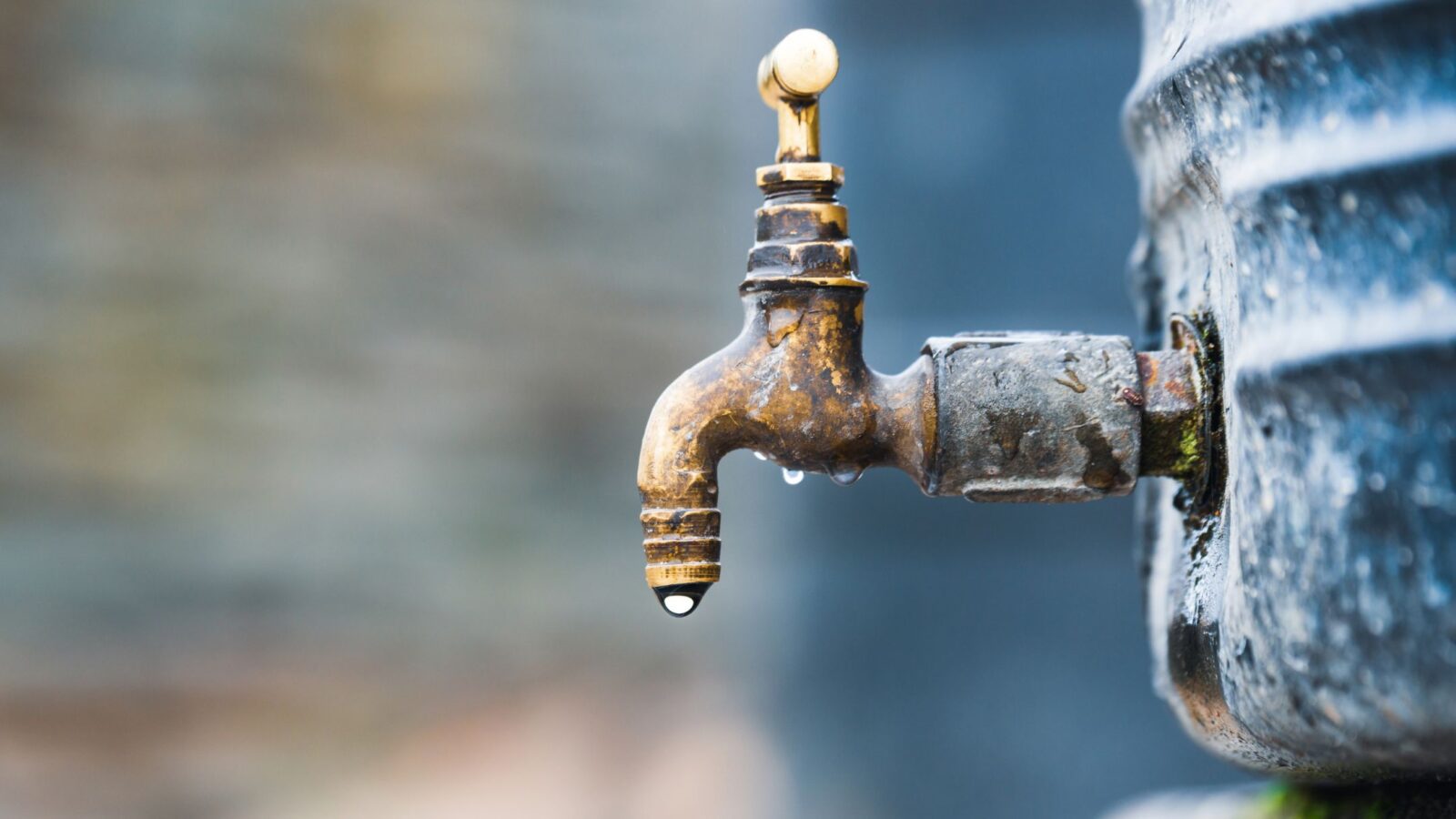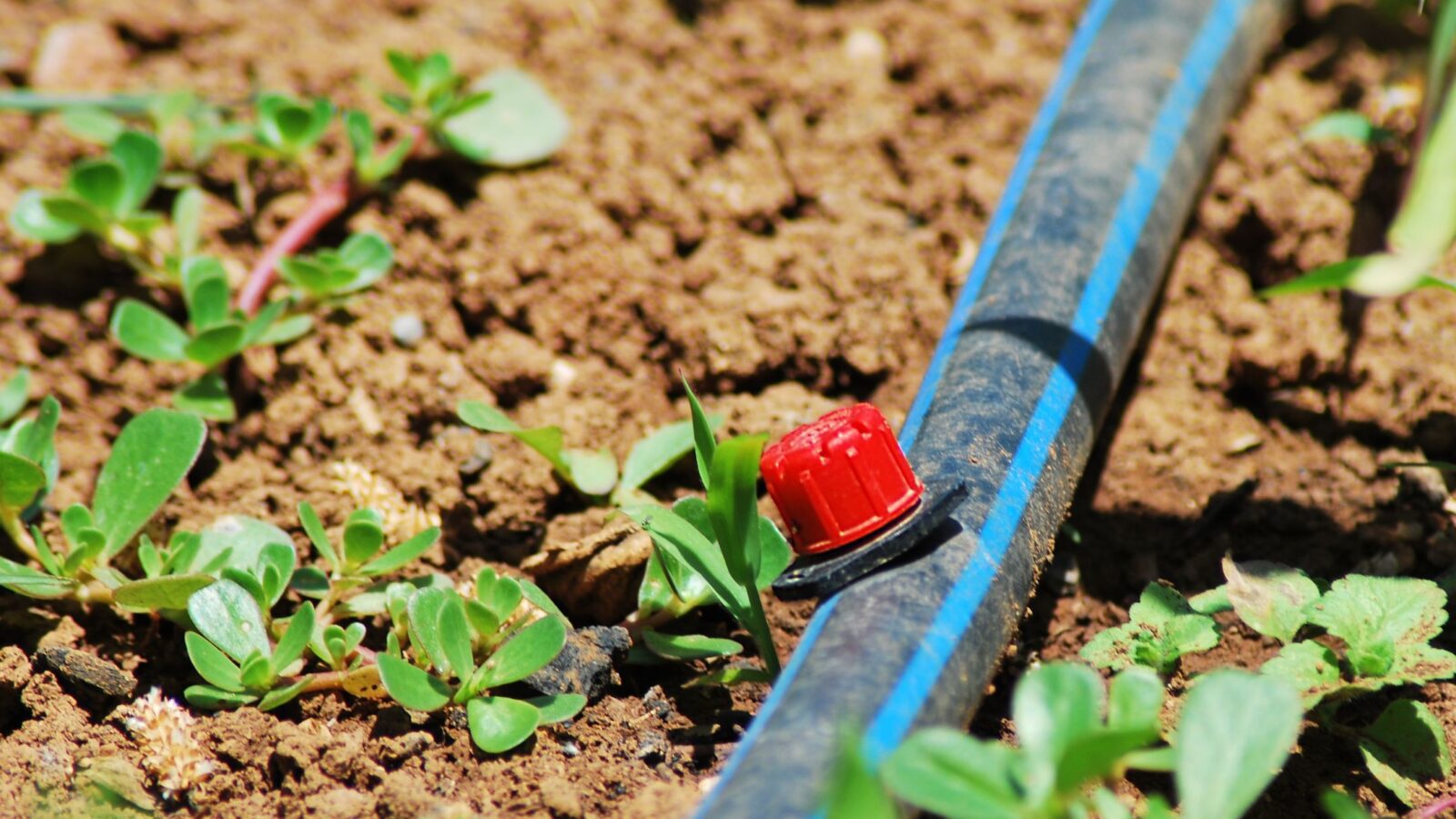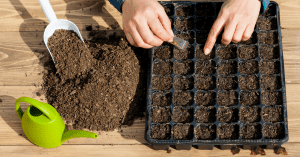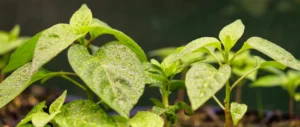So, you want a drip irrigation system for your plants. But you don’t have a tap nearby, you don’t want to use a pump, or maybe you are off-grid. Dive into this article, and discover the innovative solutions that will not only nourish your green sanctuary but will also offer you the freedom and sustainability you crave.
The First ChilliChump Video!
Below is a video showing a basic gravity-fed drip irrigation system, it’s actually the video that started everything off on my YouTube channel.
This article is dedicated to helping you understand gravity fed drip irrigation – a cost-effective and water-conserving choice for gardens of all sizes. Let’s dive into this green-thumb game changer!
Height of Water Source And Water Pressure
The height of the water source plays a crucial role in determining the water pressure in a gravity-fed drip irrigation system. As the height increases, so does the water pressure, allowing for better distribution of water to plants.
The most important thing with a gravity fed irrigation system is the height of your water source. The higher you can get it, the better. You will get more pressure, and you will have a more consistent dripper experience. If you only have a few drippers, then you can get away with a lower height.
For every foot increase in height, there can be an increase of about half a pound per square inch (psi) in pressure. So, if you raise your water source high enough, it can have enough push to move through your drip irrigation system easily!
Water pressure from the taps in your house is generally between 20 and 30 PSI (1.4 – 2 Bar). Unfortunately, if you want to get 20 PSI from a gravity-fed drip irrigation system, you will need to raise your water source to 14m (46ft)! At the height that I had my water source in the video at the bottom of this page, I would only have got around 1.5 to 2.5 PSI.
Components of a Gravity-Fed Drip Irrigation System
The components of a gravity-fed drip irrigation system include a water reservoir, tubes and connectors, and mechanisms for controlling water flow.
Water reservoir

A water reservoir is a vital part of a gravity-fed drip irrigation system. It stores the water that will flow to the plants. You can use many things as a reservoir, like rain barrels or large tanks. You could use a rain collection system to keep the reservoirs topped up.
We put our reservoir in a high place so the water flows down using gravity. Keeping it full is important to make sure there’s always enough water for your garden. Don’t let it dry out! The bigger the tank, the less often we need to refill it.
A lid keeps dirt and bugs out of our clean watering system.
Tubes and connectors

In a gravity-fed drip irrigation system, the irrigation tubing and connectors play an important role in delivering water to your plants. These components are designed to connect the water reservoir to the drip emitters or drippers that deliver water directly to the plant roots.
The tubing is typically made of durable materials like PVC or polyethylene and comes in different sizes depending on your needs. Connectors, such as barbed fittings or compression fittings, are used to attach the tubing together securely.
It’s crucial to choose high-quality tubes and connectors compatible with each other. By ensuring proper connections, you can ensure efficient water distribution throughout your garden or landscape.
Pressure Compensating Drippers

Pressure compensating drippers are our preference when it comes to drippers. However, they will not be useful when using a gravity-fed drip irrigation system. This is because these types of drippers expect a much higher pressure. The good news is the drippers that will work are a lot cheaper, they just aren’t as consistent. You can alternatively use drip lines or drip tape.
Benefits of Gravity-Fed Drip Irrigation
Gravity-fed drip irrigation offers several benefits for your homestead. It is cost-effective and efficient, conserves water, and provides targeted watering to plants.
Cost-effective and efficient
A gravity-fed drip irrigation system is not only cost-effective but also highly efficient. By using gravity to distribute water, you eliminate the need for expensive pumps or electricity.
This makes it an affordable option for both small and large gardens. Additionally, since the water flows directly to the roots of plants through drip emitters or soaker hoses, there is minimal water wastage due to evaporation or runoff.
This targeted watering helps conserve water while ensuring that your plants receive the right amount of moisture they need to thrive.
If you are harvesting your rainfall, then not only are you saving money but your plants will prefer the rain water.
Conserves water
Using a gravity fed system helps to conserve water. This is because the system delivers water directly to the roots of plants, minimizing evaporation and runoff. By providing targeted watering, only the areas that need moisture receive it, reducing waste and is a much more effective way to provide water to the plants.
Additionally, gravity-fed systems work at low pressure, which means less water is used compared to other irrigation methods. This makes it an eco-friendly choice for gardeners who want to conserve water and promote sustainable gardening practices, and reduce their reliance on municipal water supplies.
Provides targeted watering with a drip system
Gravity-fed drip irrigation systems provide targeted watering for your plants. With the use of drippers or emitters, water is delivered directly to the root zone of each plant. This ensures that water is not wasted on areas where it’s not needed, such as in between rows or on walkways.
By delivering water only where it’s needed, gravity-fed drip irrigation systems help conserve water and promote healthy plant growth. This targeted watering also reduces weed growth since weeds are less likely to receive adequate moisture.
Overall, using a gravity-fed drip irrigation system allows you to efficiently and effectively water your plants while minimizing water waste and maximizing plant health.
Setting Up a Gravity-Fed Drip Irrigation System
Setting up a gravity-fed drip irrigation system is quick and easy. Learn how to choose the right location, install the water reservoir, adjust water flow, and ensure proper drainage.
Start saving time and money on watering your plants today!
Choosing the right location
When setting up a gravity-fed drip irrigation system, choosing the right location is an important consideration. Look for an area in your garden that receives adequate sunlight and is easily accessible for maintenance.
It’s also important to consider the proximity of your water source to ensure efficient water flow. Additionally, make sure there is enough space for the water reservoir and tubing to be positioned properly without any obstructions.
By selecting the right location, you can optimize the performance of your gravity-fed drip irrigation system and ensure that your plants receive just the right amount of water they need.
Installing the water reservoir and connecting tubes
To set up a gravity-fed drip irrigation system, start by installing the water reservoir in a convenient location. Connect one end of the tubing to the bottom of the reservoir and use connectors to extend the tubing to your garden beds or plants.
Make sure to secure the tubing firmly using stakes or clips. If needed, you can also install additional tubes and emitters for different areas of your garden. Finally, adjust the flow rate by adding valves or regulators to control the amount of water reaching each plant.
Adjusting water flow and ensuring proper drainage
To adjust the water flow in a gravity-fed drip irrigation system, you can use valves or regulators. These devices allow you to control how much water is released from the system at any given time.
By adjusting the flow, you can ensure that your plants are getting just the right amount of water they need.
Proper drainage is also important in a gravity-fed drip irrigation system. This helps prevent water from pooling and causing damage to your plants or creating soggy soil conditions.
To ensure proper drainage, make sure that your tubing and connectors are free from obstructions or clogs. You can also elevate your raised beds slightly to encourage water to drain away from the plants.
Maintenance and Troubleshooting of Gravity-Fed Drip Irrigation
To keep your gravity-fed drip irrigation system running smoothly, regular maintenance and troubleshooting are essential. Check for clogs or leaks in the tubing, clean or replace filters as needed, and troubleshoot common issues like uneven water distribution.
Remember to winterize the system for colder months.
Regularly check for clogs or leaks
To keep your gravity-fed drip irrigation system working effectively, it’s important to regularly check for clogs or leaks. Clogs can occur in the tubes or drippers and can disrupt the flow of water to your plants.
By inspecting the system regularly, you can identify any clogs and clean them out before they cause damage. Additionally, leaks in the tubing can lead to water wastage and uneven watering.
By checking for leaks and repairing them promptly, you’ll ensure that your plants receive the right amount of water without any waste. So make it a habit to check for clogs or leaks in your gravity-fed drip irrigation system on a regular basis!
Clean or replace filters when necessary
We need to make sure we clean or replace the filters in our gravity-fed drip irrigation system when they get dirty. This is important because clogged filters can restrict water flow and affect the performance of the system.
By regularly checking and maintaining the filters, we can ensure that our plants receive a steady and even supply of water, resulting in healthier growth and more efficient water usage.
So, let’s not forget to clean or replace those filters when necessary!
Troubleshoot common issues such as uneven water distribution
Sometimes, you may encounter some issues with uneven water distribution in your gravity-fed drip irrigation system. Here are some common troubleshooting tips to help you solve these problems:
- Check for clogs: Inspect the drip emitters or drippers to see if they are clogged with debris or sediment. If so, clean them out using a small brush or by soaking them in water.
- Adjust the flow rate: Uneven water distribution can occur if the flow rate is too high or too low. Use the adjustable flow control valves on each tubing line to regulate the flow and ensure that it is consistent throughout the system.
- Examine the tubing connections: Make sure that all tubing connections are secure and there are no leaks. Even a small leak can disrupt the water flow and lead to uneven watering.
- Evaluate the water source: If you are using a rain barrel or other stored water source, check that it is filled properly and at an adequate level. Low water levels can cause inconsistent pressure and result in uneven distribution.
- Verify the height of your water source: Remember that gravity-fed systems rely on the height difference between your water source and your plants. If there is not enough height difference, it can affect how well the system works. Ensure that your water source is positioned appropriately.
Winterizing the system for colder months
During the colder months, it’s important to take steps to protect your gravity-fed drip irrigation system. Here are some tips for winterizing the system:
- Drain all water from the system to prevent freezing and damage.
- Disconnect and remove any hoses or tubing connected to the system.
- Store all components in a dry, sheltered area to protect them from harsh winter conditions.
- Clean and inspect all filters before storing them away.
- If you have a rain barrel as your water source, empty and store it properly.
- Check for any leaks or damage that may need to be repaired before next season.
Conclusion
In conclusion, gravity-fed drip irrigation is a cost-effective and efficient way to water your plants. It conserves water by providing targeted watering directly to the roots, and if you are harvesting your own rain water...even better! By setting up and maintaining this system properly, you can enjoy the benefits of a thriving garden while saving both time and money.
So go ahead and give it a try for yourself!
FAQs
1. What is gravity fed drip irrigation?
Gravity-fed drip irrigation is a method of watering plants where water flows through tubes or hoses under the force of gravity, delivering small amounts directly to the plant’s roots.
2. How does gravity-fed drip irrigation work?
In gravity-fed drip irrigation, water is stored in an elevated container such as a tank or barrel. The water then passes through tubes with tiny holes or emitters that release the water slowly and evenly to irrigate the plants.
3. What are the advantages of using gravity-fed drip irrigation?
Using gravity-fed drip irrigation can help conserve water by targeting only the plant roots, reducing evaporation and runoff. It also provides more precise control over watering, preventing water waste and promoting healthier plant growth.
4. Can I set up a gravity-fed drip irrigation system myself?
Yes, you can set up a simple gravity-fed drip irrigation system yourself with basic tools and materials like tubing, connectors, and emitters. However, it’s important to plan properly for proper layout and ensure adequate elevation for effective water flow.




